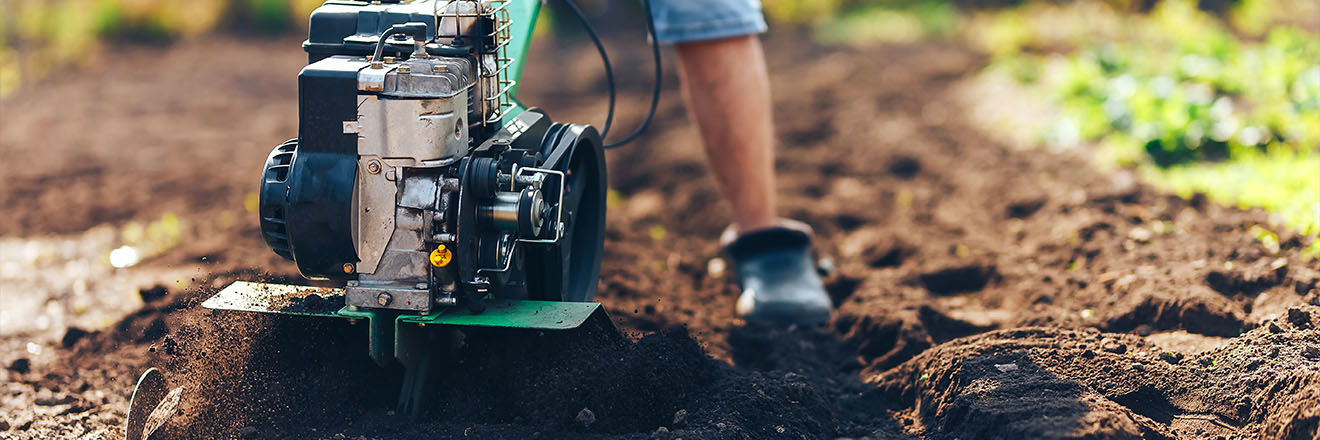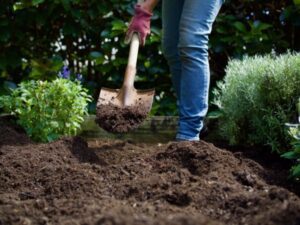As a dedicated gardener, you’re probably well aware that soil is not just dirt – it’s a living ecosystem teeming with essential nutrients that plants need to thrive. However, over time, these nutrients can become depleted, leaving your garden soil lacking in the vital elements necessary for robust plant growth. This loss of essential nutrients can occur due to various factors, including weathering, erosion, and continuous cultivation. If you’ve been experiencing poor production from your garden lately, it’s likely that your soil has become nutrient depleted.
Understanding the importance of soil health is crucial for any gardener looking to cultivate a flourishing garden. Fortunately, there are effective strategies to replenish and rejuvenate depleted garden soil, and two key components play a pivotal role in this process: sand and compost.
The Loss of Essential Nutrients in Garden Soil
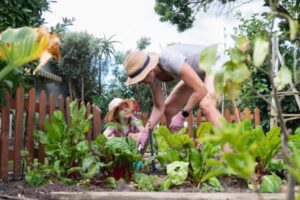 Soil degradation is a natural process that occurs over time, but human activities such as over-tilling, excessive use of chemical fertilizers, and erosion can accelerate this degradation. As soil loses its organic matter and beneficial microorganisms, its ability to support plant growth diminishes. This is applicable to vegetable gardens, flower gardens, planting beds and even lawns. With nutrient starved soil, adding fertilizers isn’t the solution since fertilizers feed plants. Compost feeds the soil.
Soil degradation is a natural process that occurs over time, but human activities such as over-tilling, excessive use of chemical fertilizers, and erosion can accelerate this degradation. As soil loses its organic matter and beneficial microorganisms, its ability to support plant growth diminishes. This is applicable to vegetable gardens, flower gardens, planting beds and even lawns. With nutrient starved soil, adding fertilizers isn’t the solution since fertilizers feed plants. Compost feeds the soil.
One of the primary concerns with depleted soil is the loss of key nutrients such as nitrogen, phosphorus, and potassium – often referred to as NPK – which are essential for plant growth and development. Additionally, depleted soil may become compacted, hindering root growth and water infiltration.
What are the signs of soil nutrient deficiency?
Soil nutrient deficiency can manifest in various ways depending on which nutrient is lacking. Here are some common signs of nutrient deficiencies in soil:
- Nitrogen (N) Deficiency:
- Yellowing (chlorosis) of older leaves, starting from the tips and spreading inwards.
- Stunted growth and reduced leaf size.
- Overall pale or yellowish appearance of the plant.
- Phosphorus (P) Deficiency:
- Dark green or purple coloration of leaves, particularly on the underside.
- Delayed maturity and reduced flowering.
- Poor root development.
- Potassium (K) Deficiency:
- Yellowing and browning of leaf edges (necrosis), starting from older leaves.
- Weak stems and poor fruit quality.
- Increased susceptibility to diseases and pests.
- Calcium (Ca) Deficiency:
- Leaf distortion and curling, especially in new growth.
- Blossom end rot in fruiting plants like tomatoes and peppers.
- Stunted root growth.
- Magnesium (Mg) Deficiency:
- Interveinal chlorosis, where the leaf veins remain green but the areas between turn yellow.
- Leaf curling and browning at the edges.
- Reduced photosynthesis and growth.
![Nutrient Deficiency in Plants]()
photo credit: https://byjus.com/biology/deficiency-symptoms/
- Sulfur (S) Deficiency:
- Uniform yellowing of young leaves.
- Stunted growth and delayed maturity.
- Reduced protein content in plants.
- Iron (Fe) Deficiency:
- Interveinal chlorosis of young leaves, with distinct green veins.
- Reduced growth and yellowing of the entire plant in severe cases.
- Leaf tips may turn brown and die.
- Manganese (Mn) Deficiency:
- Interveinal chlorosis similar to iron deficiency, but affects younger leaves first.
- Browning and necrosis of leaf tissue, starting at the edges.
- Boron (B) Deficiency:
- Brittle and distorted new growth.
- Poor flower and fruit development.
- Cracking and corky spots in fruits.
- Zinc (Zn) Deficiency:
- Reduced leaf size and distortion.
- Interveinal chlorosis in younger leaves.
- Delayed maturity and stunted growth.
It’s important to note that these symptoms can also be caused by other factors such as pests, diseases, or environmental stresses. Soil testing can help pinpoint the exact nutrient deficiencies and guide appropriate corrective measures.
The Role of Sand and Compost in Soil Rejuvenation
Amending garden soil with sand and compost is a time-tested method for restoring fertility and structure to depleted soil.
Sand
Adding sand to your garden soil can improve its drainage and aeration. Soil with excessive clay content tends to compact easily, leading to poor drainage and root suffocation. Incorporating sand helps to loosen the soil, allowing water to drain more freely and roots to penetrate deeper. Moreover, sand facilitates better air circulation in the soil, promoting the activity of beneficial soil organisms.
Adding sand to garden soil can offer several benefits, particularly if the existing soil is heavy or compacted. Here are some of the advantages:
- Improved Drainage: Sand is known for its ability to improve drainage in soil. If your garden soil tends to retain water excessively or become waterlogged, adding sand can help to create air pockets and facilitate the movement of water through the soil, preventing root rot and other water-related issues.
- Enhanced Aeration: Sandy soils are naturally more porous than clay soils, allowing for better aeration. Mixing sand into heavy clay soils can help loosen the soil structure, increase pore space, and promote oxygen exchange to the roots. This improves root development and overall plant health.
- Reduced Compaction: Sand particles are larger and less cohesive than clay particles, so incorporating sand into compacted soil can help break up compacted layers, making it easier for plant roots to penetrate and grow. This reduces soil compaction, improves root penetration, and enhances nutrient uptake.
![]()
- Faster Warming: Sandy soils tend to warm up more quickly in the spring compared to heavier soils. This can be advantageous for early planting and germination of seeds, as warmer soil temperatures promote faster seedling growth and development.
- Weed Suppression: Sand can create a less hospitable environment for weed seed germination and growth, as it makes it harder for weed seeds to establish themselves in the soil. This can help reduce weed competition with garden plants and minimize the need for manual weeding.
- Easier Workability: Mixing sand into garden soil can improve its overall workability, making it easier to till, dig, and cultivate. This is particularly beneficial for gardeners who want to maintain well-aerated and friable soil conditions for planting and gardening activities.
However, it’s important to note that adding sand to soil is not always appropriate or beneficial, especially in soils that are already sandy or have high sand content. Additionally, the type of sand used and the proportions mixed with the soil should be carefully considered to avoid creating overly sandy or nutrient-poor conditions. Our recommendation is to use fine sand in in-the-ground gardens, planting beds and the lawn; and, use coarse sand in above the ground (Raised Bed) gardens and beds.
Compost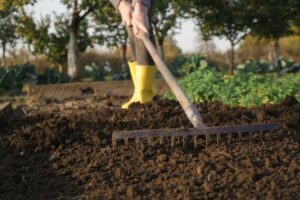
Compost is often hailed as “black gold” in the gardening world for its remarkable ability to enrich soil with essential nutrients and beneficial microorganisms. Compost is rich in organic matter, which helps improve soil structure, moisture retention, and nutrient availability. Additionally, compost acts as a natural fertilizer, slowly releasing nutrients into the soil as it decomposes. By incorporating compost into your garden soil, you’re not only replenishing lost nutrients but also enhancing its overall health and fertility.
You may be asking: If compost is so good for plants, why not just grow plants in straight compost only?
Growing plants in only compost can present several challenges and potential dangers:
- Nutrient Imbalance: While compost is rich in organic matter and nutrients, it may not contain all the essential nutrients in the right proportions that plants need for optimal growth. Over time, plants may suffer from nutrient deficiencies or imbalances, leading to stunted growth, poor fruiting, or other health issues.
- Compaction: Compost tends to be fluffy and may not provide adequate support for plant roots. This can lead to soil compaction over time, restricting root growth and reducing plant vigor.
- Waterlogging: Compost retains moisture well, but excessive moisture retention can lead to waterlogged soil conditions, which suffocate plant roots and promote root rot diseases.
- pH Imbalance: Compost can affect soil pH, making it more acidic in some cases. Certain plants may not tolerate acidic soil conditions, leading to nutrient uptake problems and poor growth.
- Nutrient Leaching: Nutrients in compost can leach out of the soil more quickly compared to traditional soil mixes, especially in rainy climates or with frequent watering. This can lead to nutrient loss and the need for more frequent fertilization.
- Risk of Disease and Pests: Planting in pure compost may increase the risk of disease and pest problems. Some pathogens and pests thrive in organic matter-rich environments, potentially leading to plant damage or loss.
- Unbalanced Soil Structure: Compost alone may not provide the ideal soil structure for plant growth. It lacks the mineral components found in soil, such as sand and silt, which are important for soil texture, drainage, and aeration.
- Hot composting: Straight compost can potentially burn and damage plant roots if it’s too high in nitrogen or if it hasn’t fully decomposed. This phenomenon is known as “hot composting,” where the composting process generates heat due to microbial activity breaking down organic matter.
Here’s how Hot Composting can happen:
- High Nitrogen Content: Compost high in nitrogen-rich materials like fresh grass clippings, kitchen scraps, or manure can heat up significantly during decomposition. This heat can be harmful to plant roots if the compost is applied directly around them, especially if the compost is not fully matured or mixed with soil.
- Ammonia Release: In the early stages of decomposition, microbial activity can release ammonia as a byproduct. Ammonia is a potent source of nitrogen, but in high concentrations, it can be harmful to plant roots and cause “burning” or damage.
- Pathogen Risk: If compost hasn’t undergone proper decomposition, it may still contain pathogens that can harm plant roots. High temperatures during the composting process help kill many pathogens, but if the compost is not fully matured, these pathogens may still be present and can damage plant roots upon contact.
To avoid these issues, it’s generally recommended to:
- Use well-aged compost that has undergone thorough decomposition and has cooled down.
![shovel soil blends]()
- Mix compost with soil in appropriate proportions to dilute its strength and provide a balanced growing medium for plants.
- Avoid applying fresh or “hot” compost directly around plant roots.
- Test the pH and nutrient levels of compost before use to ensure it’s suitable for your plants.
By following these practices, you can harness the benefits of compost while minimizing the risk of root damage to your plants.
Compost is a valuable soil amendment and nutrient source, using it as the sole growing medium for plants can pose risks to plant health and growth. It’s best to incorporate compost into a balanced soil mix that includes other components like soil and sand, to create a suitable growing environment for plants.
Compost can significantly improve crop production in poor soil through several mechanisms:
- Nutrient Enrichment: Poor soils often lack essential nutrients required for plant growth, such as nitrogen, phosphorus, and potassium. Compost is rich in organic matter and contains a variety of nutrients essential for plant growth. When added to poor soil, compost slowly releases these nutrients, providing a sustained source of nutrition for crops.
- Soil Structure Improvement: Poor soils are often compacted, lacking proper aeration and drainage. Compost improves soil structure by increasing its ability to hold moisture and nutrients, while also enhancing aeration and drainage. This creates an environment where plant roots can penetrate easily, access water and nutrients, and grow more vigorously.
- Microbial Activity Enhancement: Compost is teeming with beneficial microorganisms such as bacteria, fungi, and earthworms. These microorganisms help break down organic matter in the soil, releasing nutrients in a form that plants can readily absorb. Additionally, they contribute to the development of a healthy soil ecosystem, suppressing harmful pathogens and diseases while promoting symbiotic relationships with plant roots.
- pH Regulation: Poor soils often have imbalanced pH levels, which can hinder nutrient uptake by plants. Compost acts as a buffer, helping to regulate soil pH and create a more favorable environment for plant growth. It can neutralize acidic or alkaline soils, bringing them closer to the optimal pH range for most crops.
- Reduction of Soil Erosion: Compost helps to bind soil particles together, reducing erosion caused by wind and water. This is particularly beneficial in areas with poor soil structure, where erosion can further degrade soil fertility and productivity.
- Sustainability: Composting utilizes organic waste materials that would otherwise end up in landfills, contributing to environmental pollution. By recycling these materials into compost and incorporating them into poor soils, farmers can improve soil fertility and crop productivity in a sustainable manner, reducing the need for chemical fertilizers and pesticides.
Overall, composting offers a natural and environmentally friendly solution to improving crop production in poor soils by enhancing nutrient availability, soil structure, microbial activity, pH balance, erosion control, and sustainability.
Benefits of Amending Garden Soil with Sand and Compost
- Improved Soil Structure: Sand and compost work together to create a well-structured soil that is loose, crumbly, and friable. This improved soil structure allows roots to penetrate easily, promotes better water infiltration and retention, and encourages the development of a healthy root system.
- Enhanced Nutrient Availability: Compost serves as a reservoir of essential nutrients, releasing them gradually into the soil as it decomposes. This steady supply of nutrients ensures that plants have access to the elements they need for optimal growth and productivity.
- Reduced Soil Erosion: By improving soil structure and stability, amending soil with sand and compost helps reduce erosion caused by wind and water. This is particularly important in areas prone to erosion, where soil loss can lead to diminished fertility and ecological damage.
- Support for Beneficial Microorganisms: Healthy soil is home to a diverse community of microorganisms that play vital roles in nutrient cycling, pest control, and disease suppression. Compost provides food and habitat for these beneficial microbes, fostering a thriving soil ecosystem.
Addressing the Soil Issue in New versus Existing Gardens
For Existing Gardens and Beds
At Tim Wallace Soil Mix Supply you’ll find that our Mix & Till compost or peat, and sand amendments are ideal for gardeners who have an ample amount of good black dirt and want to replenish and reinvigorate the soil. Blended at a 50/50 ratio of sand to compost or 75/25 sand to peat, these products perform best when roto-tilled or hand-blended into the existing soil.
For New Gardens and Beds
For all the reason previously covered, a combination of soil, sand, and compost is crucial when establishing a new garden. Using a combination of soil, sand, and compost provides a balanced and fertile growing medium that supports healthy plant growth and encourages biodiversity in the garden ecosystem. At Tim Wallace Soil Mix Supply we have specialty soil blends that incorporate these three key elements for: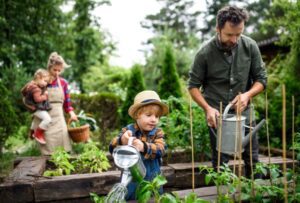
In conclusion, the loss of essential nutrients in garden soil over time is a common challenge for gardeners, but it’s not an insurmountable one. By incorporating sand and compost into your soil management practices, you can rejuvenate depleted soil, restore its fertility, and create an environment that fosters healthy plant growth. Remember, building and maintaining healthy soil is the foundation of a successful garden, and investing in soil health today will pay dividends for years to come.
Don’t endure another growing season with poor results. Give us a call today at (630) 759-1080 and get the best mix for the best results.

